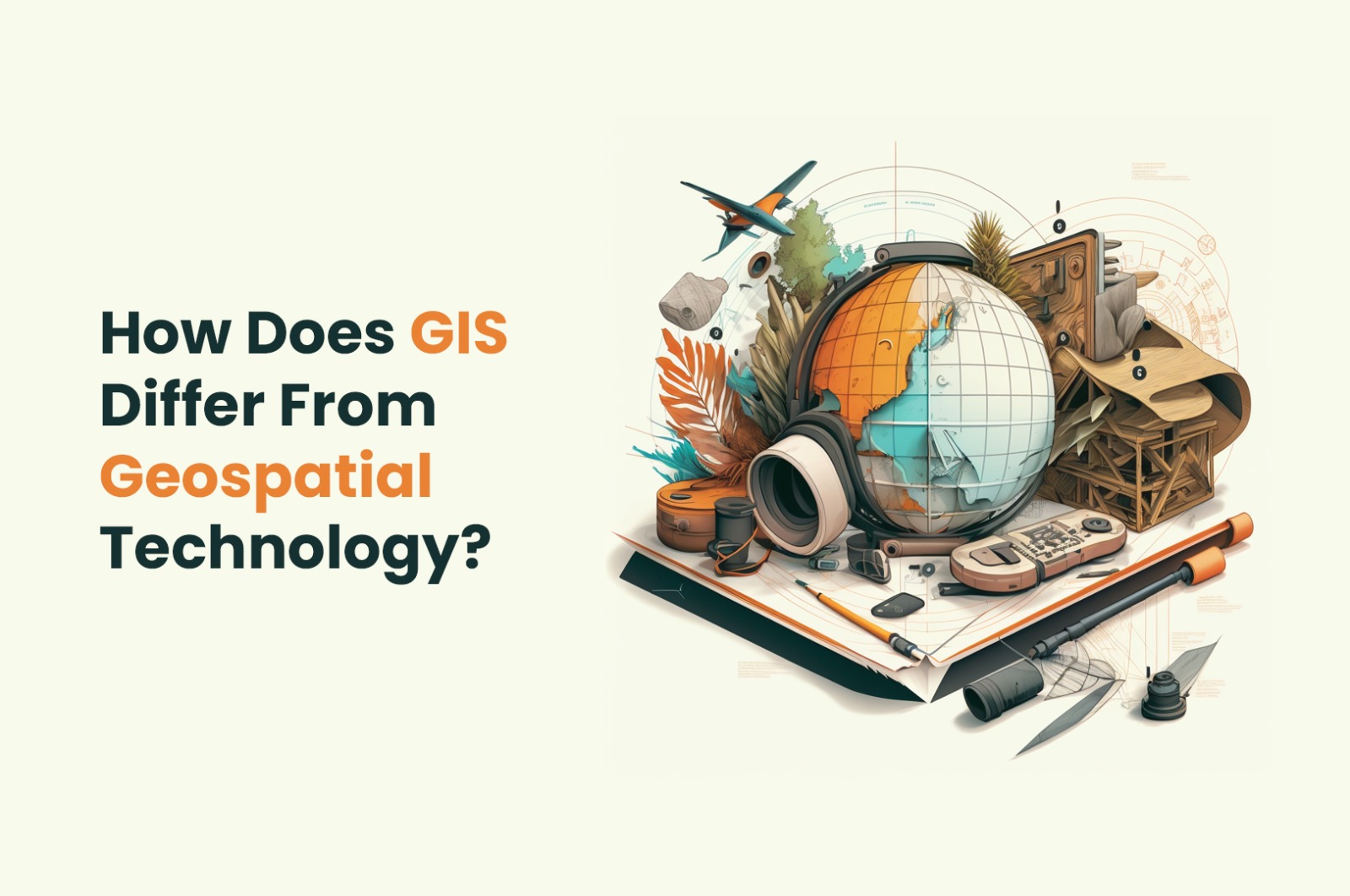GIS vs Geospatial Mapping: How Are They Different?
In recent times, nothing has had a more significant impact on people’s lives worldwide than geographical data. People use geodata in their daily lives constantly, from navigation to region-specific television and more. There are many geographical technologies that govern our understanding of geodata. In this blog, we discuss about two of them – GIS vs Geospatial mapping technology.
Geographical technology is all around us, yet there are many forms. It’s critical to comprehend the differences between these technologies, especially if you’re new to the industry and want to learn more about its many areas. The distinctions between GIS and geospatial technology may appear slight, but they are significant.
GIS vs Geospatial Mapping
GIS is a type of geospatial technology in all its manifestations; however, not all geospatial technology is a form of GIS. More precisely, geospatial is a broad term encompassing numerous geographic vision and mapping technologies, and GIS is one of them.
Geospatial and geographic information systems (GIS) are two words for technology that use geographical components. Many people often use these terms interchangeably, although they are distinct names with distinct meanings. The misconception arises due to some overlap and similarities between these concepts.
Let’s look at these two terms in more detail to see how they differ.
What Is GIS?
GIS technology provides for the storage, management, analysis, and visualization of geographical data. It creates digital maps using computer software, hardware, and data for various applications such as resource management, land-use planning, and urban planning. GIS can make use of any data that includes a location. The location can be expressed in various ways, including latitude and longitude, address, and ZIP code. GIS software can build 2D and 3D maps and facilitate spatial analysis, such as deciding the best location for a new retail store or studying the impact of a natural disaster.
What Is Geospatial Technology?
Geospatial technology is a broad technology that uses many tools and methods for collecting, organizing, evaluating, and presenting geographical data. GIS and related technologies, such as remote sensing, geofencing, GPS, and photogrammetry, may be used depending on the purpose. Agriculture, defense, transportation, and disaster management all use geospatial technology. Geospatial technology encompasses various tools and methods for acquiring, managing, analyzing, and presenting geographical information.
GIS and geospatial technology rely heavily on geospatial data like vectors, attributes, and grids. Without such data, you would be unable to profit from the benefits and insights geospatial technology offers. It is critical to realize that data is information obtained from numerous sources. However, geospatial data is unique in that it must be related to geography.
Conclusion
To summarise, GIS and geospatial technology are strong tools that may be applied in various sectors and professions. Manual research tasks and everlasting analysis become better with the help of these geography-led technologies.
While GIS focuses on collecting geographic data, geospatial technology refers to any system that registers spatial or location-based data using a coordinate system (that uses longitude and latitude data).
As more firms use geographic data to make smarter decisions and improve operations, GIS and geospatial technology are crucial to business success.

